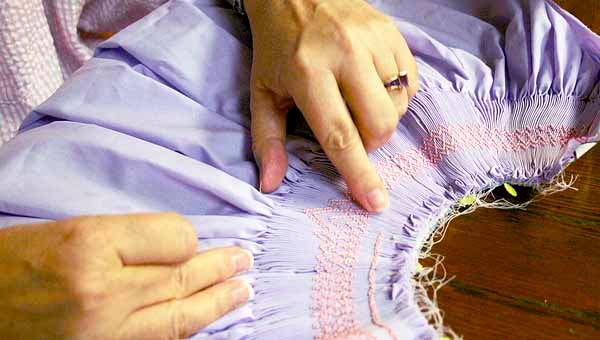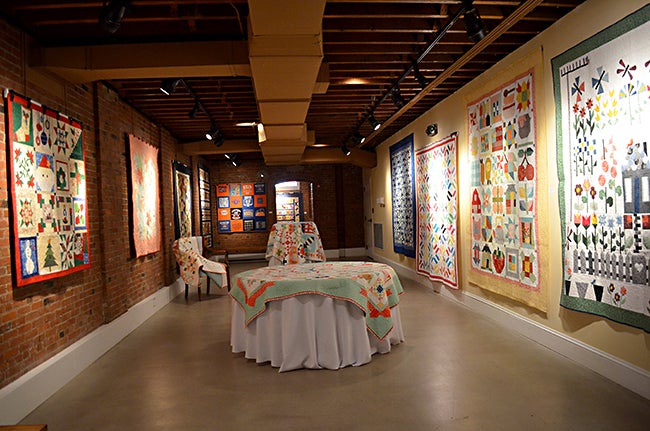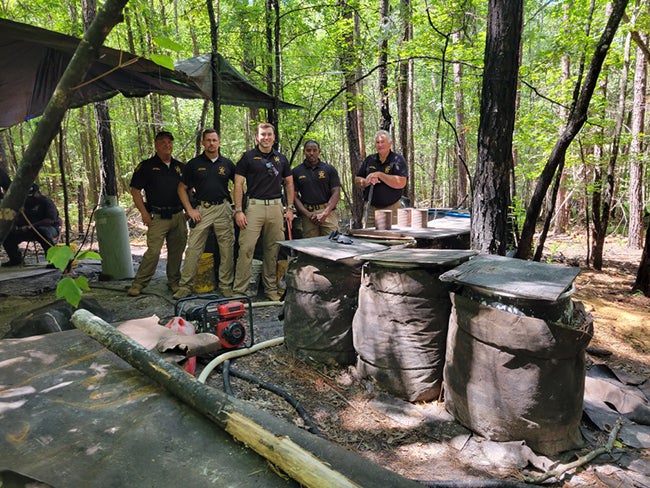Smocking: A stitch in time
Published 11:00 pm Friday, July 26, 2013

Charlene McMahon’s smocking classes will begin on Aug. 9 at the Pioneer Museum of Alabama and continue each Friday for six weeks. The class fee is $15 and includes all starter materials. As with any time people gather to “sew,” there will be stories to be told.
The mention of smocking brings up images of rosy-cheeked little girls with Shirley Temple curls wearing daintily decorated dresses.
But, no, said Charlene McMahon, smocking of old was far from that.
“Smocking has been practiced since the Middle Ages,” McMahon said. “It was developed in England and was most often worn by laborers.”
That’s a sharp contrast between a little girl’s dainty dress and a farmer’s work shirt, but that’s how far smocking has come.
“In the early days in England and here in America, smocking was stitched out of necessity,” McMahon said. “It was practical in several ways. Back then, people were not wasteful. They didn’t throw things away. They kept them until they could find another use for them. Cloth pieces included.”
Although recycling, refurbishing and repurposing had not come into fashion, practicality was in high fashion and people practiced practicality on a daily basis, McMahon said.
“In the 19th century, smocking took the place of elastic,” she said. “Pleated material would stretch and then snap back into shape. So smocking was used in the cuffs, necklines and in the bodices of women’s dresses instead of buttons.
“That made shirts and dresses easy to take on and off and, of course, they would stretch when they needed to stretch,” McMahon said.
Clothes could more easily be handed down or up or worn by several members of the family if they could stretch and then return to their original size.
“All of the material was cut in squares or rectangles and in many sizes. There were no curved pieces of material like we have today,” McMahon said. “So, it took a lot of arranging of the pieces of material to get them to fit around curves of the neck and the bodice. Smocking made it much easier to do.”
Experienced smockers could gather their pleats by eye. But by the1800s, templates and transfer dots took much of the guesswork out of smocking.
“Then, it was just a matter of connecting the dots,” McMahon said, with a smile. “Pleaters or gathering machines were invented around 1900 but women who were good smockers could pleat just as tight as one of those machines.”
McMahon can connect the dots. She learned to smock that way, but it’s a whole lot easier to smock using one of those pleaters.
So, pleaters will be used when she teaches a smocking class beginning Friday, Aug.9, at the Pioneer Museum of Alabama.
The classes will be held each Friday for six weeks and will begin at 1:30 p.m. The class fee of $15 will include all starter materials.
“We’ve had quite a lot of interest in smocking,” McMahon said. “This class is being taught in memory of Agnes Johnson, who introduced the art of smocking to many people and taught more than a few people to smock.”
McMahon will also dedicate the class to her granny, Ethel Adams, who believed that “if you have a needle and thread, you don’t need anything else.”
“Miss Agnes’ and my granny were both experts with a needle and thread and they both loved working with material,” McMahon said.
Agnes Johnson gave her time and talents to the Pioneer Museum of Alabama and to the people who appreciate different forms of fabric art. McMahon’ grandmother gave but in a different way.
“My granny was blind for much of her older life,” McMahon said. “She loved to quilt but she couldn’t see to thread a needle. So every morning my granddaddy would thread 12 needles for her before he went to the fields to work.
“All morning long, my granny would do what she loved to do, quilt. If the thread gave out, of course, she couldn’t retread the needles so she would have to sit and wait until my granddaddy came in from the fields at dinner time.”
McMahon said that before her grandmother lost her sight completely, she was able to quilt the tops that she had pieced.
“But later in life, she could only piece the quilt tops,” McMahon said. “My granny spent every day of her late life with a needle and thread in her hands. Every day except Sunday.
She did not quilt on Sunday. That was God’s day.
“Mrs. Agnes was the same way. She would not sew on Sunday. She always said that if you put a stitch in on Sunday you would be taking two out on Monday.”





